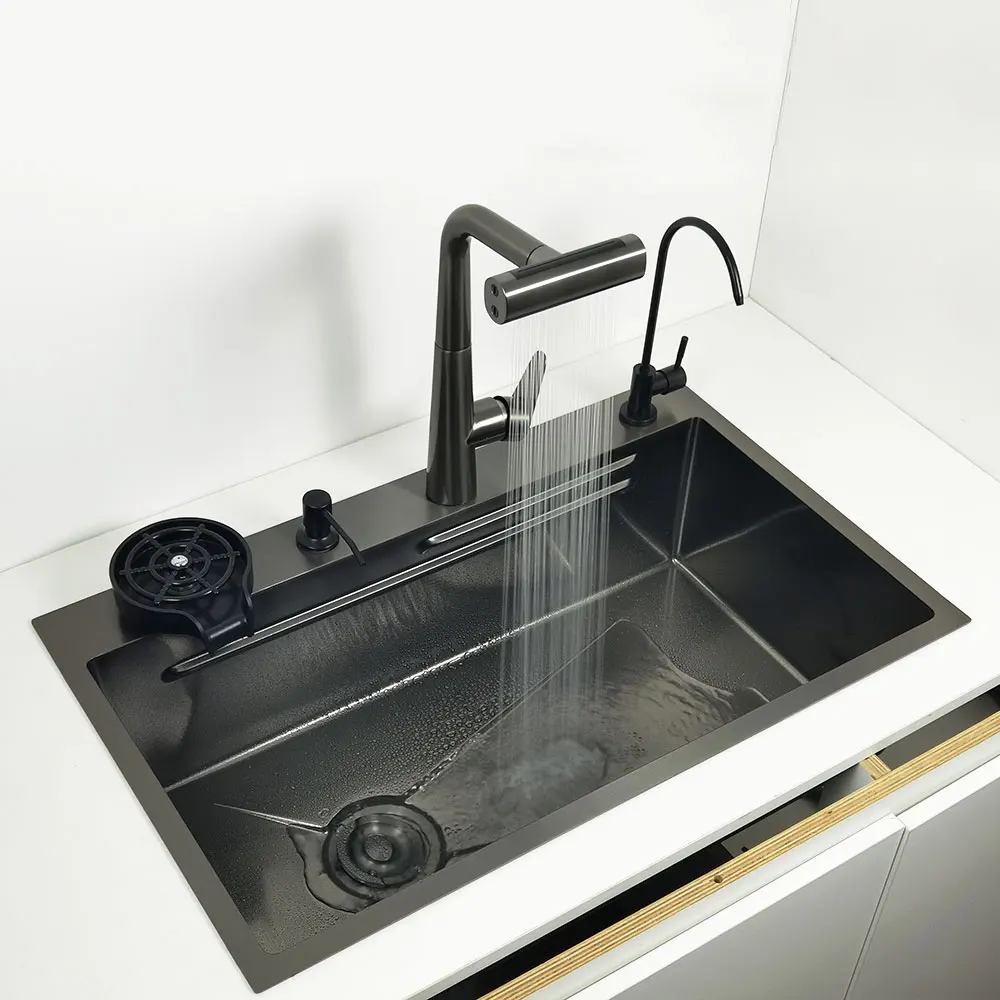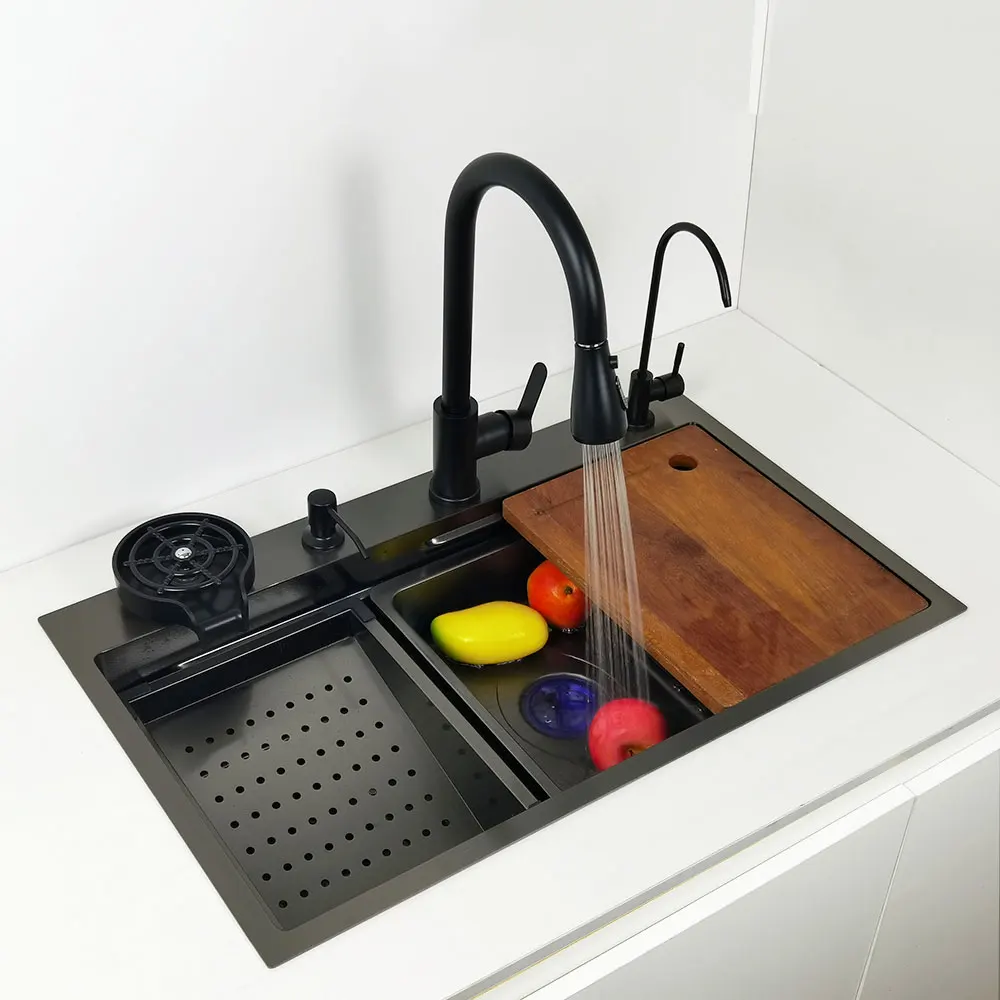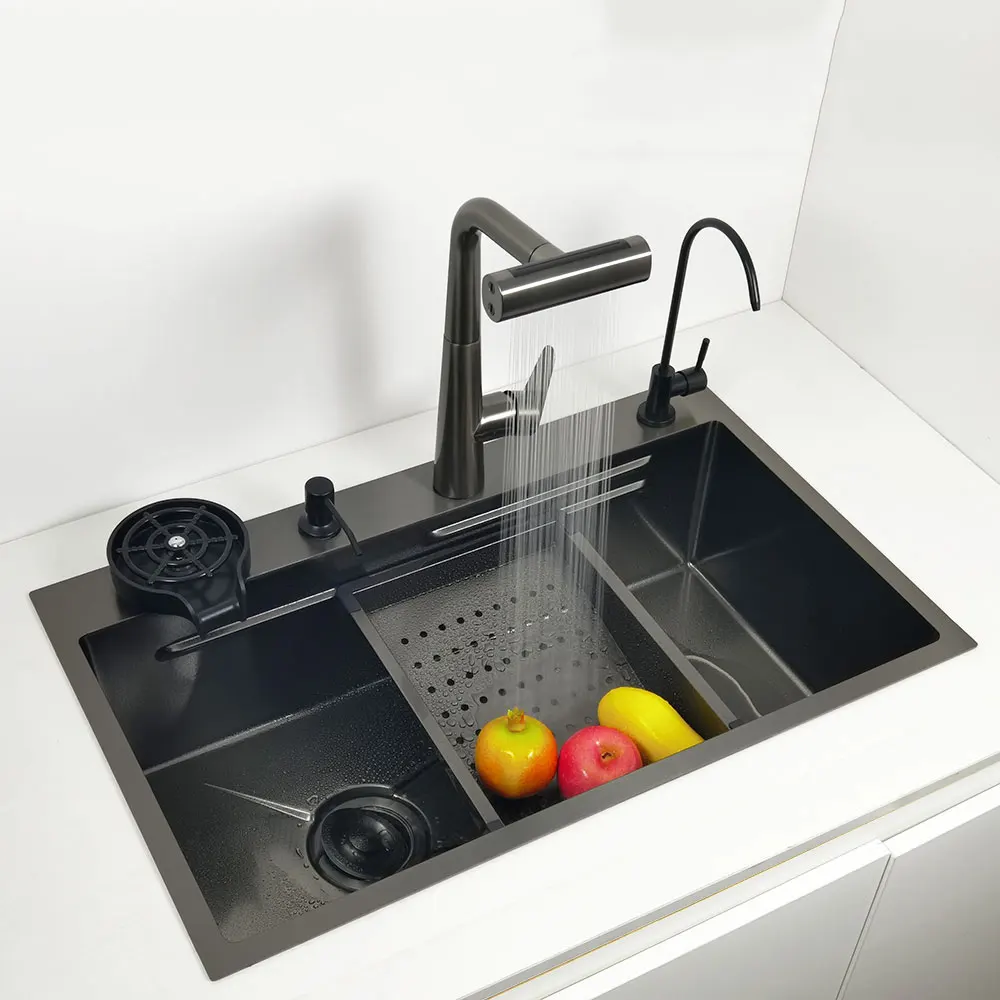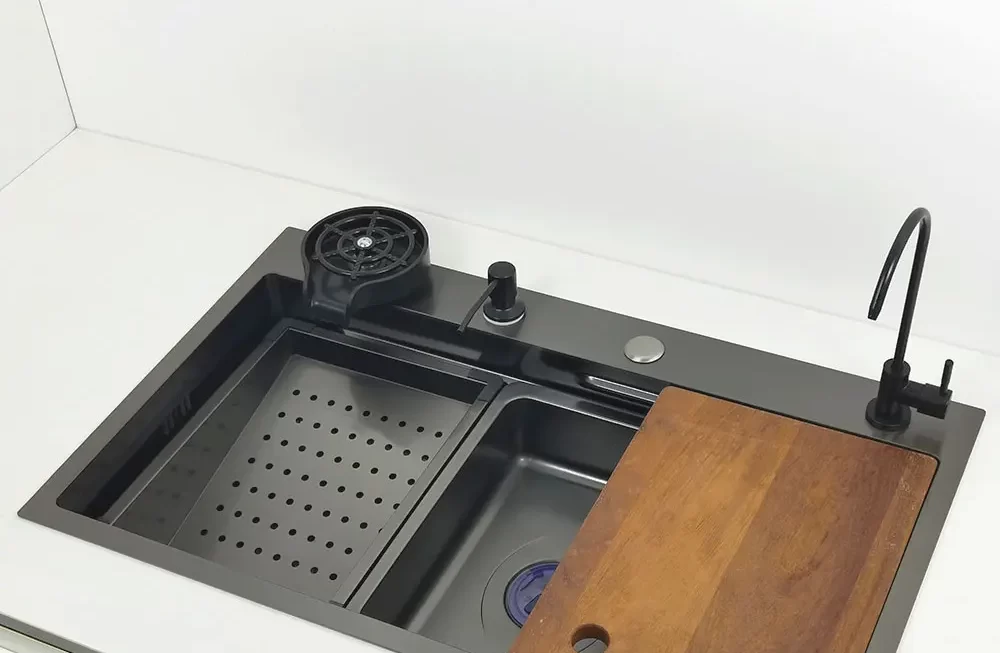Introduction to DIY Kitchen Sink Installation
Learning how to install a kitchen sink is a practical skill that can save you money. It may seem challenging, but with the right tools and a little patience, it’s something you can accomplish. This guide will walk you through all the necessary steps in the installation process. Whether you’re updating an existing sink or installing a brand new one, follow this guide to ensure a proper fit and avoid common mistakes.
Before starting, make sure you have the required tools and materials on hand. We will first measure the area, then cut the opening and install the components. We will finish by connecting the water supply and checking for leaks. Alongside this practical walkthrough, keep in mind the importance of proper sealing to prevent future issues. If at any point you’re unsure, remember that hiring a professional is also an option. Along with installation tips, we will provide maintenance advice to keep your new sink in top condition.

Required Tools and Materials for Sink Installation
To ensure a smooth installation process, gathering the right tools and materials is critical. Start your DIY project on the right foot by preparing all necessary items. Here’s what you will need:
Tools
- Tubing cutter: For cutting pipes to the correct length.
- Jigsaw: Essential for cutting the countertop to fit the sink.
- Drill/driver: Useful for installing the faucet and making pilot holes.
- Screwdriver: To help secure the mounting clips and other components.
- Mechanic’s pliers: Perfect for gripping and tightening nuts and bolts.
- Adjustable wrench: To adjust water supply lines and other fittings.
- Tape measure: For precise measurements of the counter and sink.
- Hacksaw: Sometimes needed to cut through metal parts.
- Utility knife: For clean cuts on sealant and other materials.
- Straight edge: To guide your cuts and ensure their straightness.
- Spade bit: A drill bit for making large holes for the jigsaw blade.
Materials
- Silicone caulk: For sealing the sink and preventing leaks.
- Plumber’s putty: It’s applied before setting the sink strainer in place.
- PVC pipes and fittings: Essential for assembling the drain system.
- Supply lines: To connect the faucet to the water valves.
- Pipe-joint compound: Provides a watertight seal on threaded pipe connections.
Having these tools and materials on hand will simplify the installation process. Don’t forget safety gear like gloves and goggles to protect yourself during the task. Remember, proper preparation can help prevent common pitfalls and ensure a successful ‘how to install a kitchen sink’ project. Always read instructions for each item as needed to ensure correct usage and installation.
Step-by-Step Process
Embarking on the journey of kitchen sink installation can be quite fulfilling. By taking a methodical approach, you can ensure a smooth installation. Here’s a snapshot of the steps you’re about to take:
Step 1: Measuring and Marking
Start by accurately measuring your countertop space to place your new sink correctly. Use a tape measure and mark where your sink will go.
Step 2: Cutting the Sink Opening
Next, cut through the countertop with your jigsaw, following the lines you’ve marked. It’s crucial to cut carefully to avoid any mistakes.
Step 3: Installing Faucet and Sink Components
Before setting your sink in place, attach the faucet and any other components while the sink is still accessible.
Step 4: Securing the Strainer and Drain
Applying plumber’s putty, install the strainer and connect the drain, ensuring all parts are tightly secured.
Step 5: Setting the Sink and Water Supply Connection
Place the sink into the opening, applying silicone caulk for a watertight seal. Connect the water supply lines to the faucet.
Step 6: Assembling the Drain Pipes
Put together your drain pipes, using PVC cement for PVC connections. This step is crucial for preventing leaks in the future.
Step 7: Connecting the Dishwasher Drain
If you have a dishwasher, connect its drain to the sink’s drainage system using a hose clamp to secure it.

Step 8: Testing the Installation for Leaks
Finally, run water through the system to check for any leaks. Make adjustments if needed to ensure everything is water-tight.
By following these steps, you can install a kitchen sink effectively. Remember to proceed with caution, double-check your work, and don’t rush the process. Happy installing!
The Importance of Proper Sealing and Prevention of Future Leaks
It’s crucial to seal your sink correctly to avoid future issues. A good seal not only prevents water from damaging the countertop underneath but also keeps leaks at bay. Here’s what you need to acknowledge about proper sealing:
- Use Quality Sealant: Opt for a high-quality silicone caulk for the best results. This creates a watertight barrier between your sink and countertop.
- Apply Evenly: Ensure the caulk is applied evenly without gaps. An uneven caulk line can lead to water seepage over time.
- Press Firmly: After placing the sink into the caulk on the countertop, press it down firmly. You need to form a strong seal that locks out moisture.
- Wipe Away Excess: If excess caulk squeezes out from under the sink, wipe it away with a damp cloth. This step will help keep the area looking neat and clean.
- Allow to Cure: Give the caulk plenty of time to dry and cure. Refer to the manufacturer’s instructions for the appropriate time.
- Regular Checks: Check the seal periodically. Look for signs of wear and tear that could indicate it’s time to reseal.
Properly sealing your kitchen sink helps prevent leaks, which can cause significant damage and expensive repairs. It also maintains the integrity and appearance of your kitchen. So take the time to seal it right, and keep a close eye on it as part of regular kitchen maintenance.
DIY vs. Professional Installation: What to Consider
Choosing between a DIY or professional kitchen sink installation is a big decision. Each option has advantages and challenges that you should weigh before starting. Here are some factors to consider when making your choice:
- Skill Level: Assess your skills honestly. If your experience with plumbing and tools is limited, a professional may be the safer choice.
- Time Commitment: DIY projects often take longer, especially if you’re learning as you go. If you’re short on time, hiring a professional might be worth the extra cost.
- Budget: DIY installation can save money on labor costs. Still, remember that you might need to purchase tools and materials.
- Complexity of the Job: If you need to alter plumbing lines, a professional will likely get the job done more efficiently and with fewer mistakes.
- Tools and Equipment: Consider whether you have all the necessary tools. Renting or buying what you lack can add to the cost and time.
- Warranty and Guarantees: Some warranties require professional installation. Check this before deciding, to avoid voiding warranties.
- Peace of Mind: Professionals bring experience that ensures the job is done right, which can offer greater peace of mind.
In the end, it’s about balancing the satisfaction and savings of DIY work against the expertise and efficiency of a professional installation. Weigh each factor carefully to make the best choice for your situation, skills, and kitchen sink needs.

Maintenance Tips for Your Newly Installed Sink
After successfully installing your kitchen sink, proper maintenance is key to ensuring its longevity and function. By following a few simple maintenance tips, you can keep your sink in excellent condition. Here’s how to care for your new kitchen sink:
- Regular Cleaning: Use mild soap and water to clean your sink regularly. This prevents build-up and keeps it looking new.
- Avoid Harsh Chemicals: Harsh chemicals can damage the sink finish. Opt for gentler cleaning agents.
- Inspect Seals: Check the silicone caulk seal around your sink periodically. Repair any gaps to prevent leaks.
- Maintain Aerator: The aerator should be cleaned every few months to keep water flow strong and steady.
- Avoid Clogs: Be careful of what goes down the drain to prevent clogs. Use a strainer to catch debris.
- Polish Surface: For stainless steel sinks, use a polish designed for stainless steel every few months to keep it shiny.
- Check for Leaks: Regularly look under the sink for any signs of leaks. Address leaks quickly to avoid damage.
By implementing these tips, you can maintain the high-quality look and functionality of your sink for years to come. Regular upkeep not only enhances your kitchen’s aesthetic but also ensures everything works smoothly without the need for frequent repairs.



